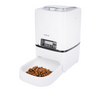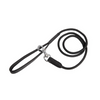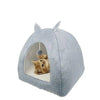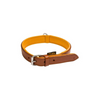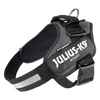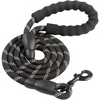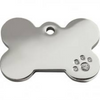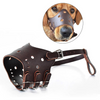The health of our four-legged friends is a major concern for every dog owner. When it comes to your pet's breathing, knowing how to spot the signs of respiratory distress is essential. Respiratory problems in dogs can be serious and require immediate attention.
In this article, we'll look at the signs of respiratory distress in a dog and what you should do if you notice any.
Signs not to miss
- Abnormal Breathing : One of the most obvious signs of respiratory distress in a dog is abnormal breathing. This may include rapid, shallow breathing, slow, labored breathing, excessive panting, or even pauses in breathing.
- Cough : Frequent or persistent coughing may be a sign of breathing problems. If your dog is coughing abnormally, it may indicate an obstructed airway or other breathing problem.
- Abnormal breathing noise : Listen carefully to your dog's breathing. If you hear noises such as whistling, wheezing, or grinding, this may indicate respiratory distress.
- Blue or pale gums : When your dog breathes normally, his oral mucous membranes should be pink in color. If they turn blue or pale, this may indicate poor blood oxygenation, which is an alarming sign of respiratory distress.
- Agitation and anxiety : Dogs in respiratory distress may become agitated, anxious, or panicked. They may gasp for air while moving around frantically or trying to find a more comfortable position.
- Difficulty lying down : If your dog has trouble lying down or prefers to stay up to breathe, this may be a sign of respiratory distress.
- Muscle pulling : You may notice muscle pulling in your dog's stomach or chest while breathing, which is a sign of intense breathing work.
- Curled Lips : Dogs in respiratory distress may sometimes curl their lips to try to get more air.
Causes of Respiratory Distress in Dogs
There are many reasons why a dog may experience respiratory distress. Some of the most common causes include:
- Airway Obstruction : A foreign object, such as a toy or piece of food, can obstruct your dog's airway, causing respiratory distress.
- Allergies : Seasonal or food allergies can cause an allergic reaction that affects your dog's breathing.
- Respiratory infections : Upper or lower respiratory infections, such as bronchitis or pneumonia, can cause breathing problems.
- Congestive heart failure : Heart problems can cause fluid to build up in the lungs, making it difficult to breathe.
- Chest trauma : An accident or trauma can cause injury to the lungs or ribs, leading to respiratory distress.
- Respiratory failure : Certain medical conditions, such as obesity or neuromuscular disorders, can lead to chronic respiratory failure.
What to do in case of respiratory distress in a dog?
If you notice signs of respiratory distress in your dog, it is crucial to act quickly. Here are the steps you should follow:
- Stay calm : Your dog can sense your anxiety, so try to stay calm to avoid stressing him further.
- Keep irritants away : If airway obstruction is suspected, try to remove any visible objects from your dog's mouth or throat.
- Emergency call : Contact your veterinarian or a veterinary emergency service immediately for advice and to arrange an emergency visit.
- Safe transport : If your dog cannot breathe normally, be sure to transport him safely to the veterinary clinic. If necessary, use a carrier to avoid worsening his distress.
- Cardiopulmonary resuscitation (CPR) : If your dog stops breathing or has no pulse, you may need to perform CPR. Consult your veterinarian or a pet first aid expert to learn this essential technique.
Act quickly
Respiratory distress in a dog can be frightening, but rapid intervention can mean the difference between life and death. It is important to monitor your dog's respiratory health and consult a veterinary health professional immediately if any problems arise. By acting quickly, you maximize your faithful four-legged companion's chances of recovery.
In conclusion, your dog's respiratory health is an essential aspect of his well-being. Signs of respiratory distress should not be taken lightly, and immediate attention is necessary. By being aware of the signs of respiratory distress and knowing how to respond in an emergency, you can play a vital role in preserving your dog's health.
Always remember that your veterinarian is your best ally in ensuring the health and happiness of your pet.









